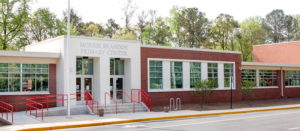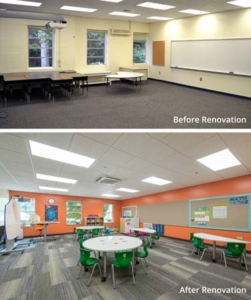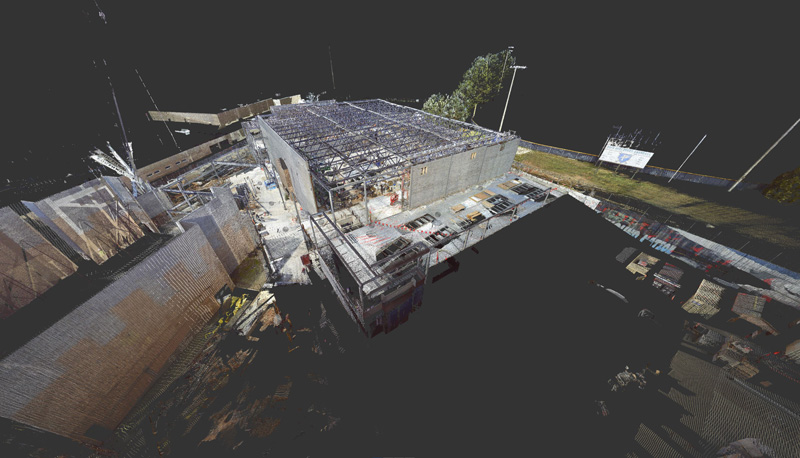 K-12 school renovations must be done quickly and quietly in order to avoid disruptions to the school environment and activities. Summer break is the longest unoccupied stretch and the obvious choice for major renovations. However, with changing school calendars, often the length of summer break is shrinking putting pressure on contractors to complete significant amounts of work in an ever-shortening period of time.
K-12 school renovations must be done quickly and quietly in order to avoid disruptions to the school environment and activities. Summer break is the longest unoccupied stretch and the obvious choice for major renovations. However, with changing school calendars, often the length of summer break is shrinking putting pressure on contractors to complete significant amounts of work in an ever-shortening period of time.
What if instead of being able to complete a minor renovation on a limited number of square feet in 7 weeks, your contractor could completely transform the interior, and more, of an entire building before teachers return this fall? This is fast-track renovation, and not everyone has the mindset or experience to do it.

Comparison of a K-12 classroom before and after renovation.
So what exactly is a “fast-track” renovation, how do you pull it off, and is it worth all the effort required to do it successfully? And in the end, how is it really different from the standard design, bid, build scenario that K-12 administrators are accustomed to with their previous renovations?
Fast track implies more than just hurrying – it’s a completely different mindset and approach to the goal of the project. The developmental phases of the project and the activities overlap in an effort to significantly reduce the amount of time needed to finish after construction begins. A traditional preconstruction timeline consists of very distinct and disparate phases.
Alternatively, fast-tracking a summer renovation introduces principles of collaboration, feedback, and iteration into the very early budgeting and design of the project. This mindset continues into later phases of design and seamlessly into project buyout. From conception, the project has a full team with one goal: giving the owner as much value as possible in the time and for the money available.
Collaboration during design allows construction to begin earlier and to proceed at a faster pace. Solid decision-making processes must be in place, along with open communication so that all parties understand what will be required of them. An overall commitment from all project stakeholders is critical.
A good contractor will always apply best practices to gain efficiencies in the schedule, but in fast-track K-12 renovations there are 5 essentials:
- On-Time Coordination
- Design Coordination and Documentation
- Communication
- Self-Performance
- Technology
On-Time Coordination
Timing is critical. Coordination meetings ideally begin during the fall of the year prior to construction starting. This assures that by the first of the year, the architect has a good sense of the project budget and, therefore, the owner’s priorities, before time is spent producing developed drawings. Contractor input in this early stage will provide critical schedule feedback and allow for early trade buyout of long lead-time items. The contractor and its subcontractors can also plan to assure sufficient manpower during construction – especially when multiple shifts and overtime are necessary during critical phases.
Design Coordination And Documentation
 There’s no room for hiccups, delays or surprises. In a typical renovation, particularly those in aging school facilities, contractors are likely to encounter issues that threaten the schedule and require time-consuming mitigation. If known early, these issues can be overcome and either worked into the schedule or, if serious, can provide owners with the information they need to make major project decisions prior to work beginning.
There’s no room for hiccups, delays or surprises. In a typical renovation, particularly those in aging school facilities, contractors are likely to encounter issues that threaten the schedule and require time-consuming mitigation. If known early, these issues can be overcome and either worked into the schedule or, if serious, can provide owners with the information they need to make major project decisions prior to work beginning.
Some measures that must be taken early are:
- Obtain hazardous material test and reports and, if detected, work with remediation experts
- Conduct concrete moisture testing and planning for mitigation, if needed
- Check the structure for existing structural deficiencies
- Identify areas where existing and new structural, mechanical, and architectural conflicts may create coordination problems during construction and develop workaround plans ahead of potential delays
Communication
Fast track requires communication be airtight on all levels, at all phases. Knowing all the activities, such as summer camps and community events that the facility hosts over the summer will keep everyone safe and the work flowing. Move-out and move-in dates and owner expectations must be clearly communicated to teachers and staff as well as parents and strictly adhered to in order to prevent the slightest delay.
Dollars spent for a third party moving company, instead of relying on teacher and parent power, is often well spent if it guarantees start and completion of moves on time.
Communication with the local jurisdiction and permit office cannot be overstated. It’s important for an architect and contractor to establish a good relationship with the inspectors and plan reviewers. This develops trust and ensures the right attention is given to the project during plan review and when on-site inspections are critical to progress.
Self-Performance
A clean jobsite is a safe job site, but it’s also a more efficient jobsite. Typically, subcontractors and vendors are required to clean up after their work. When working quickly, that doesn’t always happen. Discarded packaging, excess materials, and general debris in the space are not only unsafe and distracting, but may also conceal potential quality issues. When fast-tracking, it makes sense (and cents) for the general contractor to self-perform daily cleanup and other general labor. This is the “CEO doesn’t make the coffee” mindset, ensuring that limited skilled labor hours are well-spent by subcontractors.
It’s also much easier for the construction manager and subcontractor project managers to see where a project schedule stands when debris isn’t a distraction. Perception is reality, and it never hurts for subcontractors to have a sense of urgency about “catching up” their trade to the rest of the project.
Technology

Laser scan of Alan Pope High School under construction
You can’t talk about improving efficiency without bringing up technology.
Building information modeling (BIM) software can help with coordination between subcontractors. Documentation of existing and new conflicts between structural, mechanical, and architectural elements can be modeled ahead of potential delay-causing conflicts on site.
In addition, Winter has rolled out a fleet of rolling “job boxes” which are fully-mobile and outfitted with an internet-connected PC and flat screen monitor. This “job box” becomes the center of discussions surrounding coordination and requests for information from the architect. Instead of scheduling a later meeting at a plan table to discuss issues with involved parties, the plans are brought to the issue, and decisions can be made in real time – often with the architect and engineers’ immediate input from their office.
Summary
So if you’re considering a fast track summer renovation, make sure that you, your selected architect and all project stakeholders are on board, early, and are on the same page. And, of course, make sure you choose a contractor who is experienced and can commit to your project goals.



